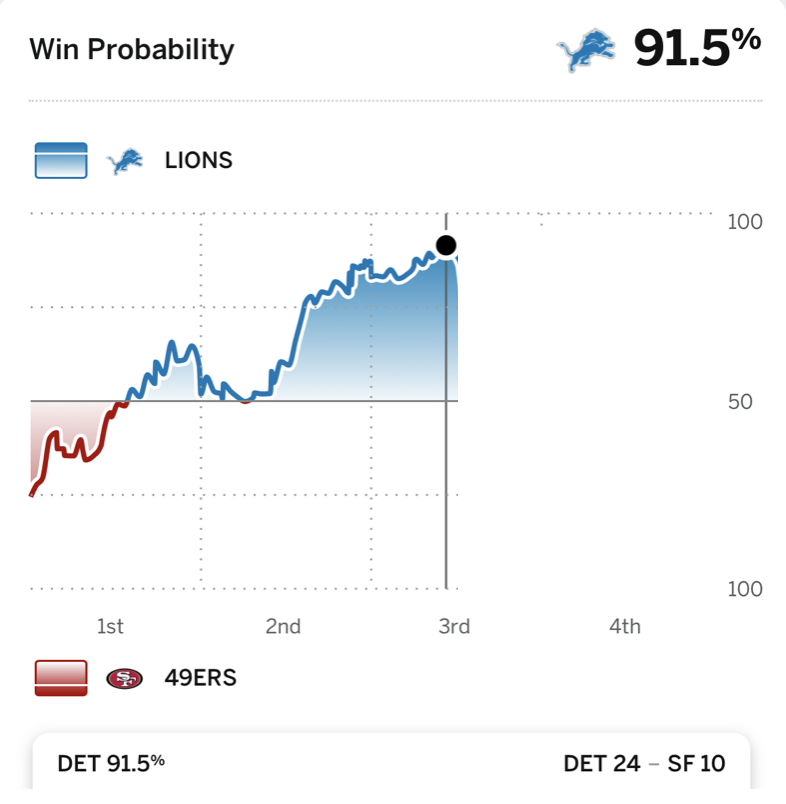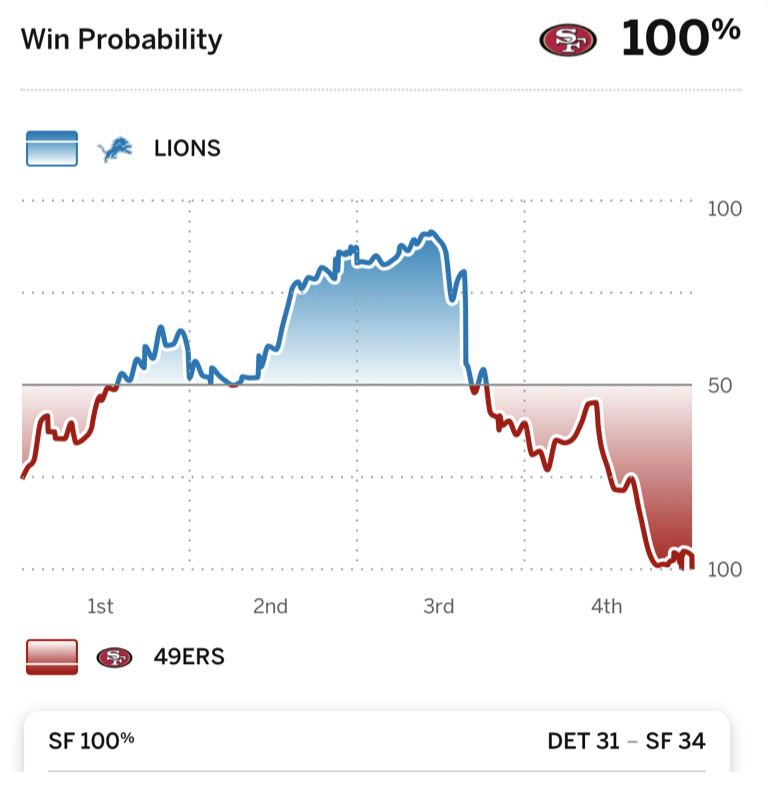I love statistics. I’m a stats nerd, constantly reviewing the data available during and after watching sports, especially football. My wife, every bit an equal as a sports fan, can’t stand all the statistics mentioned during the broadcast and just wants to enjoy the game.
While statistics are an integral part of our daily lives (business metrics, stock market, weather reports…), sometimes they don’t tell the whole story.
The NFC Championship game last Sunday between San Francisco and Detroit is a case in point. San Francisco was playing at home and was favored as the top seed. If you were watching, even after halftime, you were pretty convinced that Detroit had this wrapped up. Twitter was abuzz with Detroit Lions fans booking their flights to Vegas for the Super Bowl. The statistics made a compelling case, as shown by the real-time gamecast analysis with under 9 minutes to go in the third quarter:

This is about the point in time where statistics gave way to chemistry. I’m referencing a different chemistry here: the relationships between people.
Something happened during halftime in that 49ers locker room. From all the interviews I’ve seen, there wasn’t a bunch of shouting or panic. The team knew they had played poorly in the first half and had their season on the line. The team leaders spoke about how they needed to act differently once back out on the field.
The end result literally defied the odds:

It was the chemistry among this team’s players and coaches (and fans — we were there cheering wildly) that created a shift in momentum in the latter part of the game and completely changed the outcome. 49ers Tight End George Kittle made it clear that momentum is real even though it can’t be measured by analytics.
Witnessing this in person from section 13 was a sight to behold. That game also made me realize that even with all the great metrics we have that measure success in a medical practice, the statistics don’t tell the whole story.
At the practice I lead, the statistics paint a good picture. The practice is growing, patients give great reviews, and the team works hard to keep clinic and surgery days flowing smoothly. But what gets missed in those numbers is the equally hard work that goes into making the culture better and better over time.
By this I mean a relentless pursuit of excellence in what patients see, hear, smell, touch, and even taste (sensory assessment as addressed in Beyond Bedside Manner). It’s also about the ruthless elimination of anything that detracts from that.
The PX-focused practice understands this truth: you can’t have a great patient experience without a great employee experience. And a healthy culture is essential to a great work environment for the team.
When the culture is good, you gain momentum. Things happen easier and faster with less stress. “Everybody’s smiling and welcoming us, even at 6:30 in the morning,” a rep visiting the practice told me. That’s the type of chemistry that doesn’t show up in the statistics but makes a big impact on the overall results. Amen to that and Go Niners!

